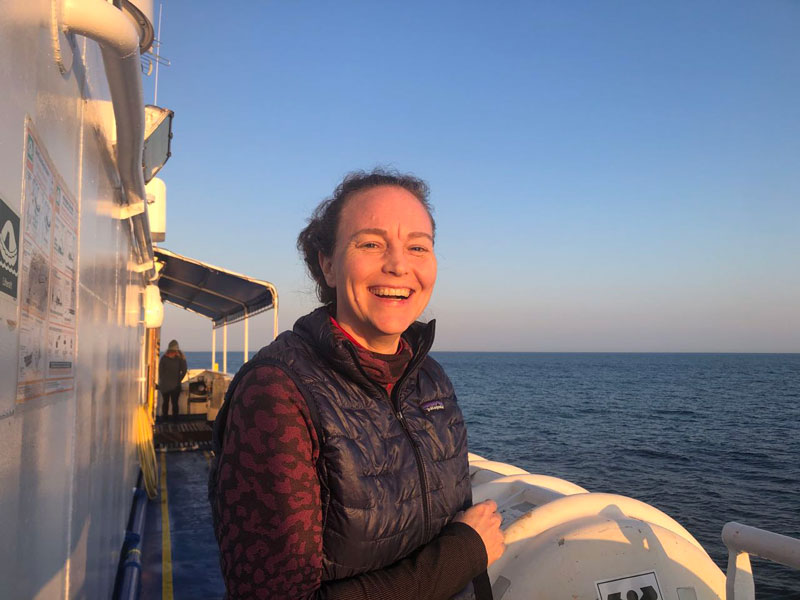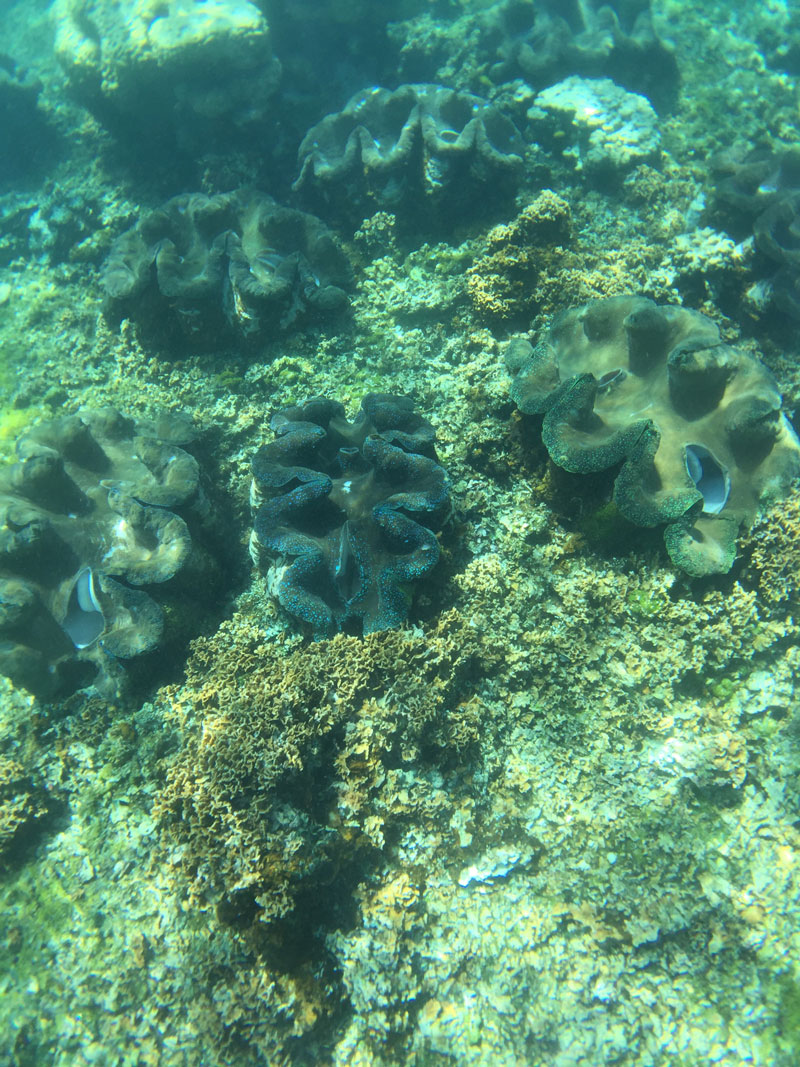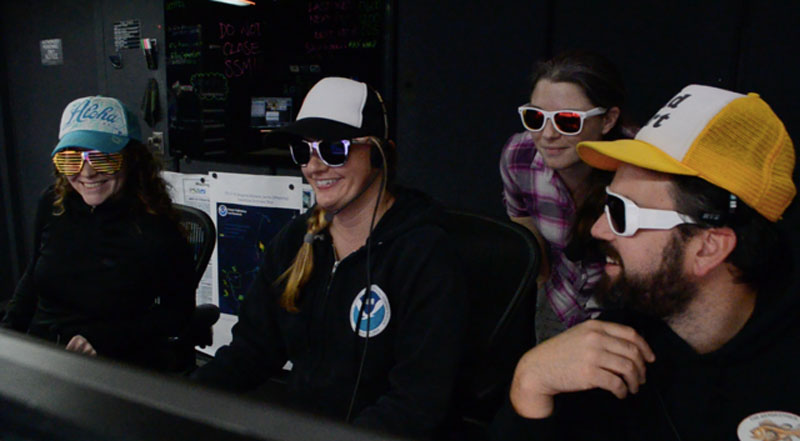Seascape Alaska 1: Aleutians Deepwater Mapping
(EX2302)
Hydrographer Amanda Bittinger, Reporting For Duty!

Amanda Bittinger is a self-employed hydrographer who recently completed her seventeenth expedition on NOAA Ship Okeanos Explorer. She has worked with NOAA Ocean Exploration’s mapping watchstander team since 2015 and has participated in the Seascape Alaska, Blake Plateau, and American Samoa expeditions, to name a few. I had the pleasure of meeting Amanda during the Seascape Alaska 1: Aleutians Deepwater Mapping expedition in 2023 and quickly learned about her invaluable experience and leadership on the mapping team. Here I ask her about her experiences on Okeanos Explorer, how she got into hydrography, and, importantly, which sea critter she most closely identifies with.
Q:
What do you do in your role as a hydrographer?
A:
I acquire, process, and create bathymetric products for hydrographic surveys. I’ve worked on exploration, geophysical wind farms, Munitions and Explosives of Concern (MEC), cable routes, NOAA charting, and pipeline surveys. For my work as a self-employed hydrographer, I do both consulting and data processing.
Q:
Where has your job taken you? Do you have a favorite place that you’ve traveled to during your career?
A:
I have traveled to the north and southeast Pacific Islands, west and east coasts of the United States, Gulf of Mexico, Mediterranean Sea (including the Adriatic Sea), Red Sea, North Sea, Panama Canal, and Bering Sea. I haven’t been to Antarctica or Indonesia yet! My favorite place so far was American Samoa, where I was able to take part in the map and dive of Vailulu’u volcano, and where I saw giant clams.

Q:
Which NOAA Ocean Exploration expeditions have you been involved with?
A:
I’ve been on several NOAA Ocean Exploration expeditions, including:
- 2015 Hohonu Moana: Exploring Deep Waters off Hawai’i
- Telepresence Seafloor Mapping in the Pacific Remote Islands Marine National Monument – Wake Island Unit
- Shakedown, Calibration, and Testing in the Main Hawaiian Islands
- 2017 American Samoa Expedition: Suesuega o le Moana o Amerika Samoa
- Telepresence Mapping in American Samoa and the Cook Islands
- Musicians Seamounts Telepresence Mapping
- Deep-Sea Symphony: Exploring the Musicians Seamounts
- Eastern Pacific Mapping (Telepresence Mapping)
- Canal Transit and Gulf of Mexico Mapping
- NESDIS VIIRS Satellite
- Telepresence Mapping of the Southeast U.S. Continental Margin
- Mapping Deepwater Areas Southeast of Bermuda in Support of the Galway Statement on Atlantic Ocean Cooperation
- Deep Connections 2019: Exploring Atlantic Canyons and Seamounts of the United States and Canada
- 2021 U.S. Blake Plateau Mapping
- Voyage to the Ridge 2022 (remote, shoreside)
- Seascape Alaska 1: Aleutians Deepwater Mapping
I am also scheduled to participate in Seascape Alaska 5: Gulf of Alaska Remotely Operated Vehicle Exploration and Mapping.
Q:
What are the benefits of being self employed in your field? What are some of the drawbacks?
A:
The main benefit of being self employed is the freedom of choice with regard to schedule, location, team, and area of expertise. It takes around three years to build up your client base to the point where you can pick and choose, but I make my own schedule. For drawbacks, I am gone for long periods of time and occasionally I miss important occasions like weddings and holidays because I cannot schedule around them. I do have second families in other places, though, so that kind of makes up for it.
Q:
What is your favorite part about working on NOAA Ship Okeanos Explorer?
A:
I get to find cool stuff and go to new places that I haven’t been before. I love being a part of making new discoveries, learning new software, and being given the freedom to have creative license over developing new processes and streamlining old ones. I like working with our explorers-in-training, too.
Q:
What do you wish the public understood about hydrographic work or mapping expeditions?
A:
There is a lot of behind-the-scenes support and logistical planning that happens. I try to remind people that there’s an entire ship running, getting us where we need to go. There’s the ship’s crew and shoreside support, too.
Q:
What made you pursue this line of work or sparked your interest in hydrography?
A:
My mom bought me a book about Jacques Cousteau when I was young, so I naturally gravitated to the ocean. I think the mapping just kind of fell into place; I sort of chose between fishery ships or mapping ships.
Q:
What is the most memorable animal encounter that you’ve had at sea?
A:
I saw orcas off Prince William Sound during GPS observations.
Q:
If you had to live the rest of your life as an ocean critter, which would you choose and why?
A:
Sea turtle. Riding the ocean currents with a lot of other turtles in much the same vibe seems like a quality way of spending your life. I love the Finding Nemo guys that ride the East Australian Current.

By Logan Kline, 2023 John A. Knauss Marine Policy and Science Communication Fellow, NOAA Ocean Exploration
Published May 30, 2023